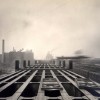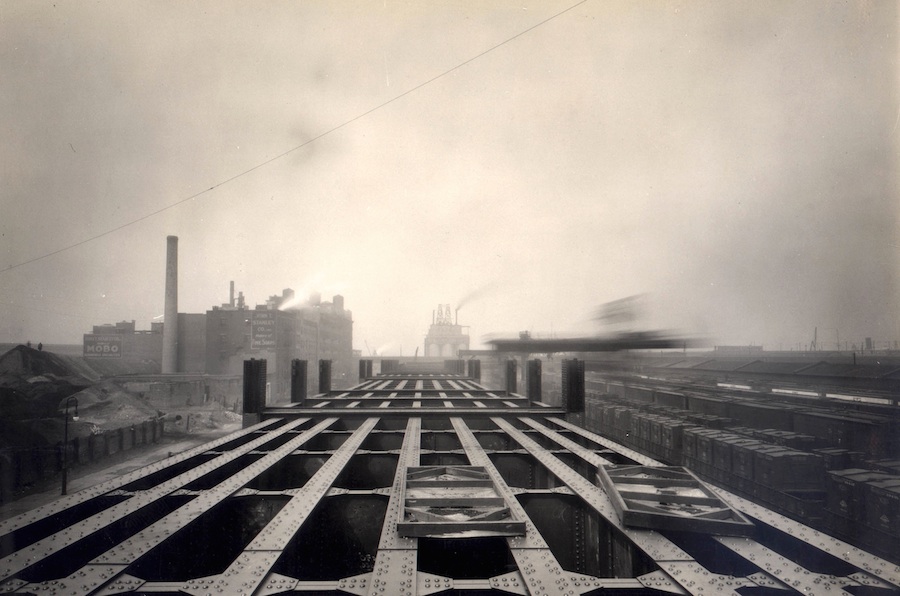NECS Conference “Sonic Futures”, 23-26 June, London, UK
Chair: Christoph Lindner (Amsterdam)
Speakers: Christoph Lindner (Amsterdam), Daan Wesselman (Leiden), Dan Hassler-Forest (Amsterdam), Pedram Dibazar (Amsterdam)
This panel brings together researchers from the Cities Project at the Amsterdam School for Cultural Analysis to examine the critical and perspectival trope of the ‘scape’ (landscape, mindscape, soundscape, etc) in relation to a range of urban settings, including Los Angeles, New York, and Tehran.
Maintaining a thematic engagement with sonic constructions of the urban in media representations, the papers in this panel seek to understand how the trope of the ‘scape’ can be used across different media, geographical contexts, and theoretical frameworks to engage in the critique of contemporary forms of urbanism.
Space and Scape Debates: Soja, Lyotard, Deleuze and Guattari
Christoph Lindner (University of Amsterdam)
This paper offers an extended critical reflection on theories of landscape and forms of visuality developed in the fields of critical spatial theory, philosophy, and urban geography. In particular, the discussion seeks to trace a tension between concepts of “space” and “scape” – between social production and perception – running through the work of Edward Soja, Jean-Francois Lyotard, Gilles Deleuze and Felix Guattari. The paper concludes by considering how these space and scape debates can inform our understanding of the representation of cities in visual culture, including cinema and photography.
“In the parlance of our times”: L.A. and the Repetition of Language in “The Big Lebowski”
Daan Wesselman (Leiden University)
Set in Los Angeles in the early 1990s, “The Big Lebowski” (1998) offers a representation of the postmodern city (cf. Soja), though not by locating the postmodern in architecture or space, but in language. Throughout the film, phrases are lifted from one setting and reproduced elsewhere. As they move across the diverse social landscape, this foregrounded iterability establishes itself as a general condition for the city. As a feature of the postmodern city, such reproducibility is often attributed to signage or taken as a property inherent in urban space (e.g. in Auge’s “non-lieux” or Koolhaas’s Generic City). The Big Lebowski, however, locates reproducibility in mobile and iterable speech, as a condition that is therefore not external, given or fixed, but continuously produced across the city. The film thus features a “speechscape” for L.A. that brings together the postmodern and the urban through productive repetition.
The Cityscape as Artistic Reflection in “Synecdoche, New York”
Dan Hassler-Forest (University of Amsterdam)
Charlie Kaufman’s film “Synecdoche, New York” centers on its protagonist’s increasingly elaborate attempts to re-create every aspect of “authentic” city life as an all-encompassing theater project. This process in the film ultimately illustrates the opposite point: neither the authenticity of traditional mimesis nor the artist’s failure to capture real life in art, but rather the theatrical nature of contemporary urban life. By combining postmodern philosophy (Foucault, Zizek) with urban studies (Soja) and film theory, this paper reveals how films like “Synecdoche, New York” provide representations of our engagements with cityscapes as the central paradox of postmodern forms of subjectivity.
The Transcendental, the Silent and the Space of Resistance: The Sonic Presence of the Iranian City
Pedram Dibazar (University of Amsterdam)
Although Western thought has indulged in the visual representation of Islamic traditions or institutions – issues like the shape of mosques or the veil of women – Islamic culture itself, to make a generalized assertion, is ontologically non-visual. This paper will examine the ways in which the sonicscape of Iranian cities – such as the din of the Bazaar and the daily hovering sound of Azan – becomes the most powerful imaginary of the city. Transcendental sounds, of Azan or Allah Akbar, and the affirmative silence of ordinary people in their everyday lives turn into a shared heritage of discontent and revolt, as echoed from rooftops, diffused by new communication devices, or as their meaningful absence in the media and everyday life. This paper will argue that silence as performative action becomes a strategy of presence for the ordinary in everyday life, with the result that soundscapes overrun the visible as the field of resistance.

